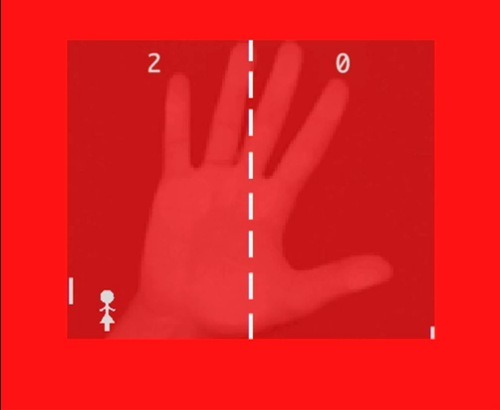
Technologies: Director, Photoshop, Sound Edit 16
Current URL: http://bookchin.net/projects/intruder.html
Wikibook Chapter: https://wiki.brown.edu/confluence/display/MarkTribe/Natalie+Bookchin
Natalie Bookchin created this interpretation of Jorge Luis Borges story The Intruder (1966) —
a grim tale of prostitution, fraternal jealousy, and violence against women in which two brothers fall in love with the same woman, share her, and sell her to a brothel. The narrative ends with the woman’s murder and the brothers’ reconciliation.
Bookchin’s version is played out on the web as a ten segments modeled after video games including Pong, Space Invaders, and shooting style games. The simple graphics and audio provide an undertone to the violent acts of the story.
The female victim is an “intruder” where she becomes an object of the game, and the viewer is thus drawn into the actions of the brother “as an object with no agency”.
The interactive version relies on the Marcomedia Shockwave plugin and no longer works in a web browser; a video by Jon Cates gives the best sense of the action
The Intruder – Natalie Bookchin (1998 – 1999) from jonCates on Vimeo.
At another level, Bookchin interrogates a different level of “intrusion”; she
seems to suggest that, both as a woman and as a contemporary artist, she is herself an intruder in the male-dominated, entertainment-driven world of computer games. The deftness of Bookchin’s critique lies in the parallels she draws between the violence of Borges’s misogynist literary narrative and the violence and sexism that are ubiquitous in most games.
As noted in the book, Bookchin successfully bridged two forms
By combining literature and games, Bookchin builds a bridge between high art and low culture, calling the distinction between the two into question. This kind of leveling is a common feature of New Media art.
She went on to design Metapet, another web-based video game experience that questions society and culture— a game “in which players act as corporate managers, controlling genetically modified human employees who have been bred to include a fictional obedience gene found in dogs”
